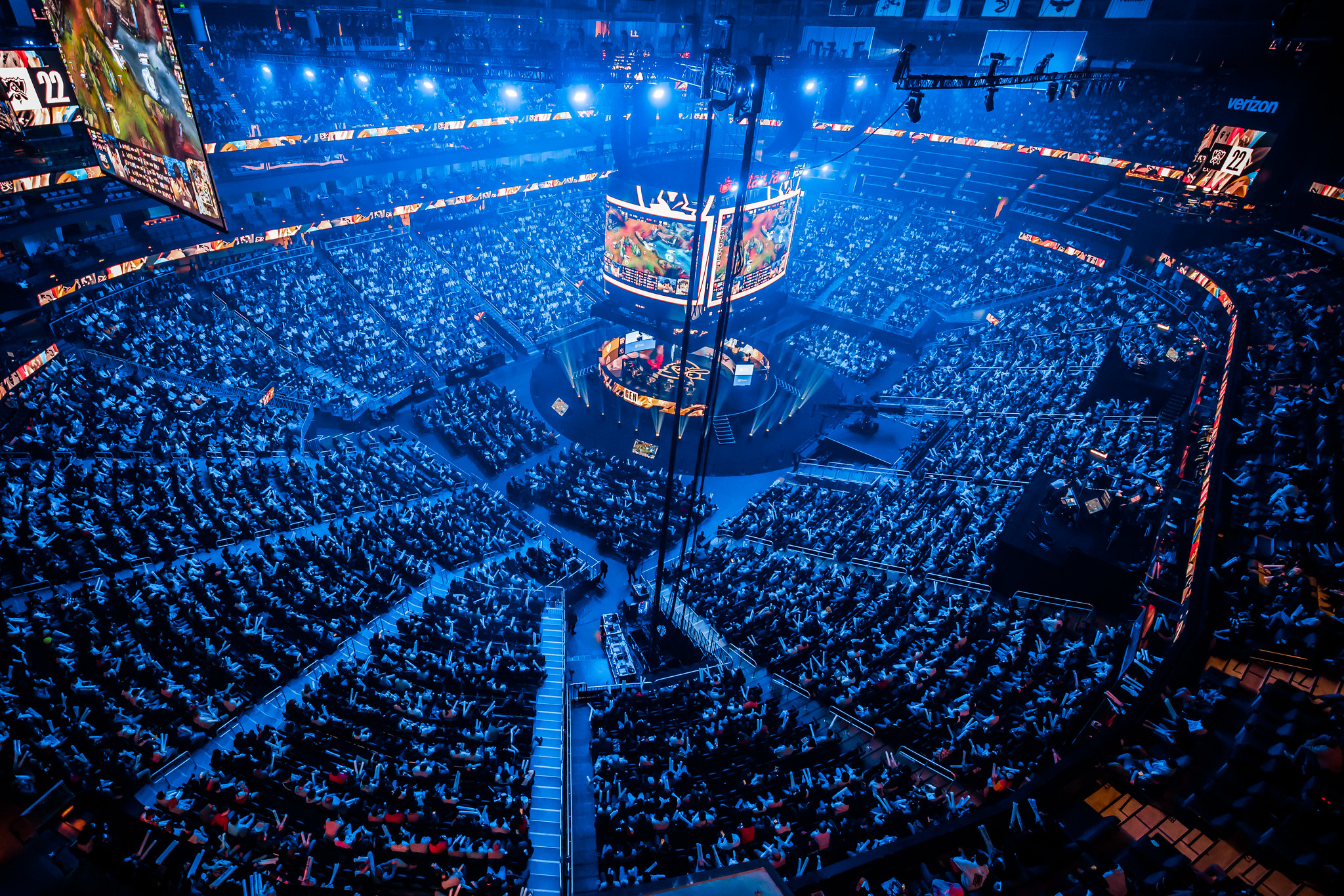
The booming world of Esports has not only captured the attention of millions of gamers and enthusiasts but has also become a lucrative business venture.
Esports, short for electronic sports, has emerged as a force to be reckoned with in the world of entertainment. What started as a niche hobby has now evolved into a global phenomenon, captivating audiences with its thrilling competitions and engaging gameplay.
Esports tournaments are now filling stadiums, attracting millions of online viewers, and even securing broadcast deals with major television networks. The rapid growth of this industry is a testament to its immense popularity and potential.
In this article, we will delve into the various revenue streams that drive the business of Esports, with a focus on sponsorships. So, if you’re curious about the money-making potential of Esports and the factors driving its growth, keep reading!
Unveiling the Key Players in the Esports Industry #
Before we begin, let’s identify the key parties involved in the entire business of Esports. There are several key parties involved in an Esports business, including:
- Esports teams: Prominent Esports teams such as Team Liquid, OG, and Evil Geniuses hold significant influence in the field. These teams heavily rely on sponsorships and merchandise sales as their primary sources of revenue. Additional income streams for them include tournament winnings, external investor capital, and monetizing media rights.
- Sponsors: Sponsors like Red Bull and Intel play a crucial role in the Esports ecosystem, contributing to around 60% of the total Esports revenues. Various brands from diverse industries sponsor Esports teams and tournaments, employing sponsorship models similar to those found in traditional sports.
- Gaming companies: Key players in the Esports industry, gaming companies such as Riot Games, Electronic Arts, and Activision Blizzard actively develop and publish the games that form the foundation of competitive play. These companies may also extend their support through sponsorship of Esports teams and tournaments.
- Streaming platforms: Crucial to the Esports industry, streaming platforms like Twitch and YouTube Gaming offer fans the opportunity to spectate live tournaments and matches. These platforms generate revenue through advertising and subscriptions, thereby contributing to the financial viability of the Esports ecosystem.
- Event organizers: The organization of Esports events stands as a significant pillar within the industry, with event organizers such as ESL and PGL playing a pivotal role in bringing together teams, sponsors, and fans. Their revenue streams include ticket sales, sponsorships, and merchandise sales, forming the backbone of their financial operation.
Top 10 Most Valuable Esports Organizations #
Revenue Streams in Esports #
Sponsorships have been and remain the primary source of income for Esports teams. However, as the industry continues to expand, new revenue streams may emerge and existing ones may evolve.
Revenue Streams by Segment #
Esports is a rapidly growing industry with multiple revenue streams. Here are some of the ways that Esports generates revenue:
-
Sponsorships: Sponsorships account for approximately 60% of all Esports revenues, making them the largest source of income for Esports teams. These sponsorships encompass a wide range of companies and industries, operating in a similar manner to traditional sports sponsorships. Recognizing the influence and potential of Esports, brands are increasingly investing in this domain.
-
Advertising: Money flows into Esports through media rights, live event ticket sales, and in-game purchases. Sponsorships and advertising are the primary revenue streams for Esports teams.
-
Merchandising: Esports teams primarily rely on merch sales. Merchandise sales are also a key factor driving growth in Esports.
-
Tournament prize money: Esports teams generate money from tournament prize money. Here are the leading Esports games worldwide in 2022, by cumulative tournament prize pool (source: Statista):
-
Streaming/content creation: Esports teams generate money from streaming and content creation.
-
Licensing: Esports companies and individuals have found success in the licensing of their products.
To gain a better understanding of the financial landscape, let’s explore the global revenue distribution within the Esports market in 2022.
Revealing the Global Revenue of the Esports Market in 2022 #
Overall, the data above showcases the diverse revenue sources in the Esports industry, with sponsorships playing a pivotal role. It reflects the maturing and evolving nature of the Esports market, with various sectors contributing to its financial growth and sustainability.
Sponsorships: Powering the Esports Ecosystem #
Common Types of Sponsors for Esports Teams #
Esports teams rely heavily on sponsorships for revenue, and there are a wide variety of companies and industries that sponsor Esports teams. Some of the most common types of sponsors for Esports teams include:
-
Gaming hardware companies: Companies that produce gaming hardware, such as computer components and peripherals, are a natural fit for Esports sponsorships.
-
Food and beverage companies: Food and beverage companies often sponsor Esports teams and events, as they can provide refreshments for players and fans.
-
Energy drink companies: Energy drink companies (e.g. Red Bull, Monster Energy) are a popular sponsor for Esports teams, as they can provide a boost of energy for players during long gaming sessions.
-
Technology companies: Technology companies, such as Intel and Samsung, are major sponsors in the Esports industry.
-
Gambling companies: Some gambling companies offer Esports betting odds and have been pioneers in the Esports sponsorship sector.
How Sponsoring Esports Teams Pays Off for Sponsors #
Sponsors provide financial support to Esports teams, which allows them to invest in better equipment, hire more staff, or expand their operations. The financial stability also helps teams focus on their performance, as they don’t have to worry about how they will pay for the next tournament or streamer event. In addition to financial support, gaming sponsorships can provide the following benefits to Esports teams:
-
Brand exposure: Sponsors can attach their name and logo to an Esports team, which can provide valuable exposure to their brand. This is especially true for popular teams and streamers, who can bring a lot of eyes to brands providing sponsorships.
-
Product placement: Sponsors can provide their products to Esports teams, which can be used during streams or tournaments. This can help to promote the sponsor’s products to a wider audience.
-
Networking opportunities: Sponsors can provide networking opportunities for Esports teams, which can help them to connect with other players, sponsors, and industry professionals.
-
Access to events: Sponsors can provide access to events, such as gaming conventions and tournaments, which can help Esports teams to build their brand and connect with fans.
In essence, sponsors play a pivotal role in the Esports industry, offering vital financial support and a range of supplementary benefits to Esports teams and streamers. In return, sponsors reap the rewards of increased brand exposure, product promotion, networking opportunities, and access to the rapidly expanding and enthusiastic Esports audience. The symbiotic relationship between sponsors and Esports teams fuels the growth and vibrancy of the industry as a whole.
Measuring Sponsorship Success: Key Metrics for Esports Teams #
Esports teams measure the success of their sponsorships through various metrics, including:
- Social media traffic: Teams can track the number of social media interactions and followers they have across different platforms.
- Sales revenue: Teams can track the amount of revenue generated through sales, such as merchandise sales.
- Web traffic: Teams can track the amount of web traffic generated through their sponsorships.
- Attribution: Teams can break down their web and sales data to accurately attribute it to the various activities, ensuring that their sponsorship was successful.
- Unique viewers: Teams can track the number of unique viewers and how long they watched the video to determine the level of effectiveness of a marketing campaign.
- Brand perception: Esports viewers are more accepting of advertisements than traditional sports fans, and brand favorability and perception are both significantly higher for Esports advertising than traditional sports.
- Fan base growth: Teams can track the growth of their fan base, which can be an indicator of the success of their sponsorships.
- Co-sponsorship: Viewers think more favorably of a brand that has a co-sponsorship of their preferred esport, and they are heavily influenced by ads that help support these leagues.
Esports Sponsorships vs. Traditional Sports Sponsorships #
Esports sponsorships largely work the same way as traditional sports sponsorships, but there are some differences. Here are some key points:
Similarities #
Sponsorships serve as crucial income sources for both Esports and traditional sports teams, encompassing diverse industries. Furthermore, sponsorships play a vital role in driving industry growth and supporting leagues.
Differences #
Esports viewers show greater acceptance of advertisements compared to traditional sports fans. Esports has proven more effective at capturing viewer attention during sponsorship ads. Moreover, Esports enthusiasts acknowledge the role of advertising in industry growth and hold a positive view of brands that support their favorite pastime.
Brand favorability and perception are notably higher for Esports advertising when compared to traditional sports. Unlike traditional sports, where brand activations span multiple layers, Esports sponsorships tend to focus more on individual teams.
Esports organizations heavily rely on sponsorship revenues, which constitute around 60% of total Esports revenue, while brand contributions make up approximately 25%.
Closing Thoughts #
In conclusion, sponsorships are a vital part of the Esports industry, representing around 60% of all Esports revenues and being the largest source of income for any Esports team. Esports viewers believe that sponsors are critical to the success of Esports, and they actively hope that brands will come on board to support the games they enjoy watching and the Esports industry as a whole. As the Esports industry continues to grow, it is likely that sponsorships will remain a key source of income for Esports teams and a vital focus of the industry.
